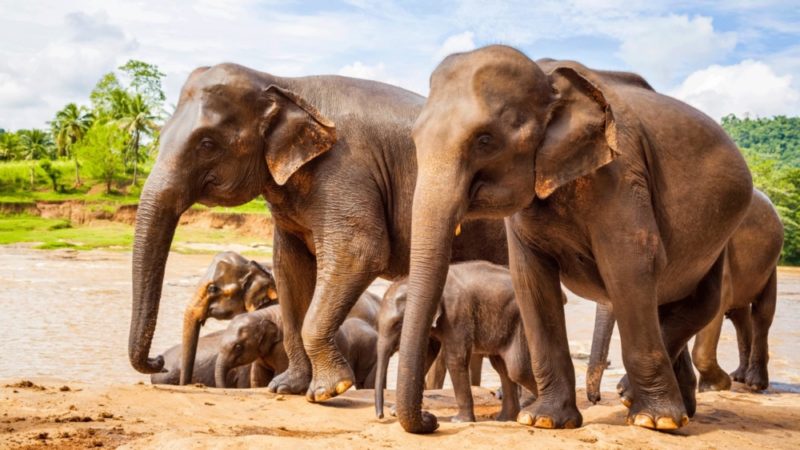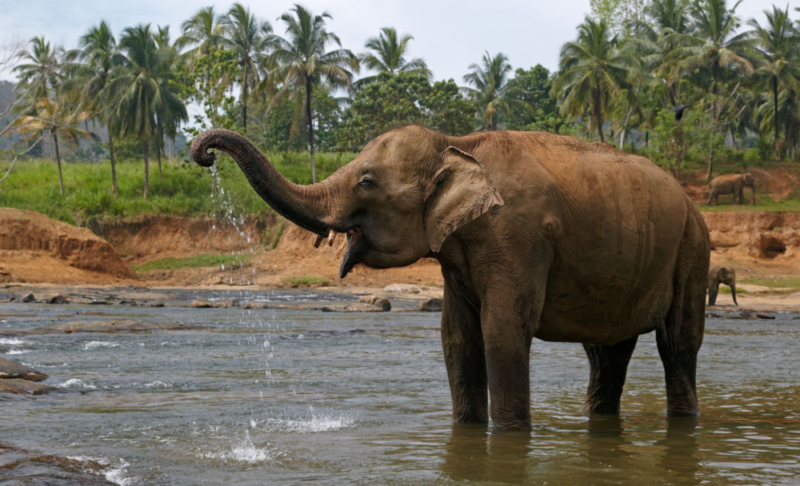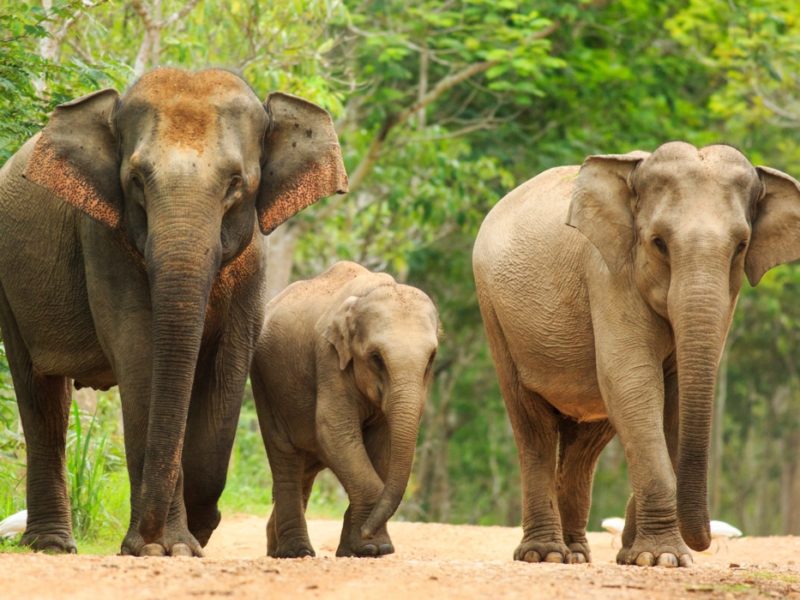The Indian elephant is a very interesting animal. It differs from other species. There are a number of features that are unique to such an animal.
Material Content:
Description of the Indian Elephant
This symbol of strength and wisdom is part of the elephant class, the family of mammals, the order of proboscis, ranking second in terms of size among terrestrial mammals after African relatives. The height of the male is 2.7 m, the female is almost 2.2 m. The body length is 5.5–6.4 meters. The Indian elephant weighs about 2700 kg, but there are larger specimens with a body weight of up to 5000 kg.
In the modern classification there are 4 subspecies:
- Sri Lankan - without tusks, the head looks large relative to the body;
- Sumatran - not so large dimensions allowed to call it "pocket";
- Bornean - a feature that distinguishes it from other species are large ears and a long tail;
- Asian - a characteristic feature - respectable tusks.
Animal habitat
Indonesia, Malaysia, Ceylon, Myanmar, Vietnam, India, Nepal - the area of the Asian elephant, which prefers forests of the tropics and subtropics.
Lifestyle & Nutrition
Indian elephants live in herds where matriarchy is pronounced. Sometimes adult males separate and exist independently. Lead a twilight or nocturnal lifestyle. During the day they hide in the shade from the scorching rays of the sun, fanning their ears like a fan. A frightened animal can reach speeds of up to 48 km / h.
Almost 20 hours a day are engaged in the search for food. They need a lot of food - 8% of their total body weight. An individual weighing 3 tons eats 240 kg of grass, tree leaves, fruits, branches and bark per day.
Adult males are sleeping, standing, leaning on a tree trunk. Their sleep is shallow and sensitive.Females and elephants lie on the ground while resting.
There are no sweat glands in the skin of the giants, which often causes them to get dirty with dirt or pour water. Such "procedures" allow you to save moisture in the body, protect against stinging insects and prevent sunburn. Thick wrinkled skin is covered with sparse hair. When scratching on tree trunks, it erases, then the giants look spotty.
Skin color may be dark gray or brown. There are albinos. They are not quite white: the skin is noticeably lighter and the yellow iris of the eyes.
An important role in nutrition is played by the trunk, teeth, tusks.
The trunk is a universal organ. It serves for breathing, odor recognition, dousing with water, eating. This organ was formed as a result of fusion of the nose with the upper lip. There are no cartilage or bones in it. Incredible mobility is achieved through 5,000 muscles and tendons. On the edge of the trunk is a sensitive process that can even find a small button in the dust.
He also drinks with this “device”, which holds 6-8 liters. It draws in fluid, pushes a coiled organ into its mouth and blows it directly into the throat.
And it is also used in communication, greeting each other, to help elephants. Immediately after birth, the mother teaches the baby to walk, supporting the trunk. They are even punished by spanking a naughty man. A strong blow can break bones.
The teeth of the Asian giant are only 4 and only radical. They grow to 25-30 cm. They cut through the depths of the jaw and move forward as they grow. When they grind off, new ones appear behind. The weight of one incisor of an adult can reach 4 kilograms, during life they change 6 times. The first shift is two years old, the second is 4 years old, the third is 9 years old, the fourth is 35 years old, and the last is somewhere around 40 years old and serves the animal until the end of life.
Tusks are grown upper teeth. With their help, elephants rip off the bark from trees, defend themselves from enemies: leopards, lions, tigers. In the mating season, tusks are used as weapons against rivals. Elephants are left-handed and right-handed. This is determined by the abrasion of the tusks, since with the used it happens to a greater extent.
The organ of hearing is not only the ears, but also the legs. Scientists have found that elephants can send and sense seismic vibrations over a distance of 2 kilometers.
Breeding and offspring
The herd, consisting of young animals and females with babies, obeys the older female. It is her concern for the safety of relatives.
Elephants become sexually mature by 10-12 years after birth, but only after 15 years of life are able to bear the cub, ready for reproduction. Males, having reached 10-17 years of age, leave the family and live independently. They enter the battle for possession of the female in an excited state, which is called "intoxication" or "must."
Pregnancy lasts about 22 months. The fetus is fully formed by the nineteenth month. The remaining three are actively gaining weight. A baby is born 1 meter long and weighing 100 kg. During childbirth, females become in a circle, closing and protecting the mother and baby from the attack of predators. A baby elephant is born already with tusks. They are small and fall to two years.
Two hours later, the baby is already standing and starting to suck on mother's milk. The female dusts it with dust so that the smell does not attract predatory animals. After several days, the cub sets off along with the herd, grabbing its mother’s tail with its proboscis. He feeds on milk for 1.5–2 years, and from 6 months he eats plant foods.
Kids suck milk from any lactating female.
Having given birth, the elephant defecates, which is required so that the baby can remember this smell. He will eat them when he grows up. So the bacteria necessary for the absorption of cellulose, as well as non-processed nutrients, will enter his body.
Life span
They live under natural conditions for about 70 years, in captivity - for 10 longer.The century of the elephant named Lin Wang was 86 years - this is a unique case.
How many Indian elephants are left on Earth
According to the Elephant Protection Fund, their number is between 30,000 and 50,000 individuals. Of the entire population, 20% exist in captivity. If in 1900 the number of Asian giants was 200,000, then at present it has fallen significantly. In 1986, this species was listed as endangered in the International Red Book.
Elephants recognize themselves in the mirror, which indicates a high level of intelligence, developed memory, thinking. Indian - the most flexible and good-natured, easily tamed. Animals are used in various works as a transport, as well as in circuses. In India, such giants participated in hostilities.
















